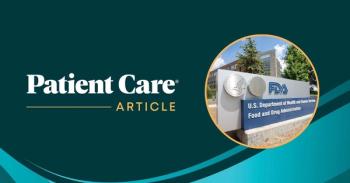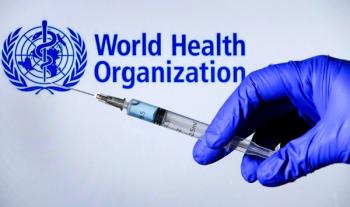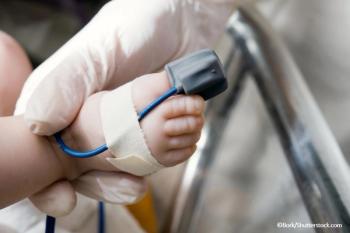
Top 10 Common Medication Errors-Drug #5: Amoxicillin/Clavulanic Acid
Medication errors in the pediatric population occur in both the inpatient and outpatient settings. Pediatric medication errors occur at an approximate rate of 16% of cases in the outpatient setting.
Medication errors in the pediatric population occur in both the inpatient and outpatient settings. Pediatric medication errors occur at an approximate rate of 16% of cases in the outpatient setting.1
Many potential medication errors may occur. In this series, I focus on 10 errors that are commonly seen in outpatient clinics. In previous articles, I focused on common errors associated with infant acetaminophen,2 insulin,3 ceftriaxone,4 and hydralazine and hydoxzyine.5
A 5-month-old boy (weight, 7 kg) presented to the clinic with otitis media. The patient was given a prescription for amoxicillin/clavulanic acid (Augmentin®, 250 mg/5 mL; 330 mg PO bid x 7 days). After 1 day of taking this medication, the patient started having frequent diarrhea and his parents brought him into the clinic to be seen again.
What’s the problem here?
Discussion
High-dose amoxicillin/clavulanic acid is an appropriate medication for managing otitis media in the pediatric population. The suspension formulation of this medication comes in various concentrations (125 mg/5 mL, 200 mg/5 mL, 250 mg/5 mL, 400 mg/5 mL, and 600 mg/5 mL). Each concentration includes a different amount of clavulanic acid (Table).6
The problem here is that the clinician should have prescribed an Augmentin® product with a concentration that has an amoxicillin to clavulanic acid ratio of 7:1 or higher (200 mg/5 mL, 400 mg/5 mL, or 600 mg/5 mL).6 Diarrhea is a major adverse effect of amoxicillin/clavulanic acid, and the risk is increased tremendously if the amoxicillin to clavulanic acid ratio is lower than 7:1.
This potential medication error can be easily prevented by paying close attention to the amoxicillin to clavulanic acid ratio.
Table. Clavulanic acid content in various Augmentin® concentrations
Augmentin® concentration (mg/5 mL)
Clavulanic acid amount (mg/5 mL)
Amoxicillin to clavulanic acid ratio
125
31.25
4:1
200
28.5
7:1
250
62.5
4:1
400
57
7:1
600
42.9
14:1
From: Taketomo CK, Hodding JH, Kraus DM. Pediatric Dosage Handbook. 2011.6
References:
References
1. Kaushal R, Goldmann D, Keohane C, et al. Adverse drug events in pediatric outpatients. Ambul Pediatr. 2007;7:383-389.
2. So J. Top 10 common medication errors-and how to avoid them: Drug #1: acetaminophen. Sept 19, 2011.
3. So J. Top 10 common medication errors-and how to avoid them: Drug #2: insulin. Oct 18, 2012.
4. So J. Top 10 common medication errors-and how to avoid them: Drug #3: ceftriaxone. Nov 28, 2012.
5. So J. Top 10 common medication errors-and how to avoid them: Drug #4: hydroxyzine and hydralazine. Dec 28, 2012.
6. Taketomo CK, Hodding JH, Kraus DM. Pediatric Dosage Handbook. 18th ed. Hudson, Ohio: Lexi-Comp; 2011.
Newsletter
Enhance your clinical practice with the Patient Care newsletter, offering the latest evidence-based guidelines, diagnostic insights, and treatment strategies for primary care physicians.



















































































































































































































































































